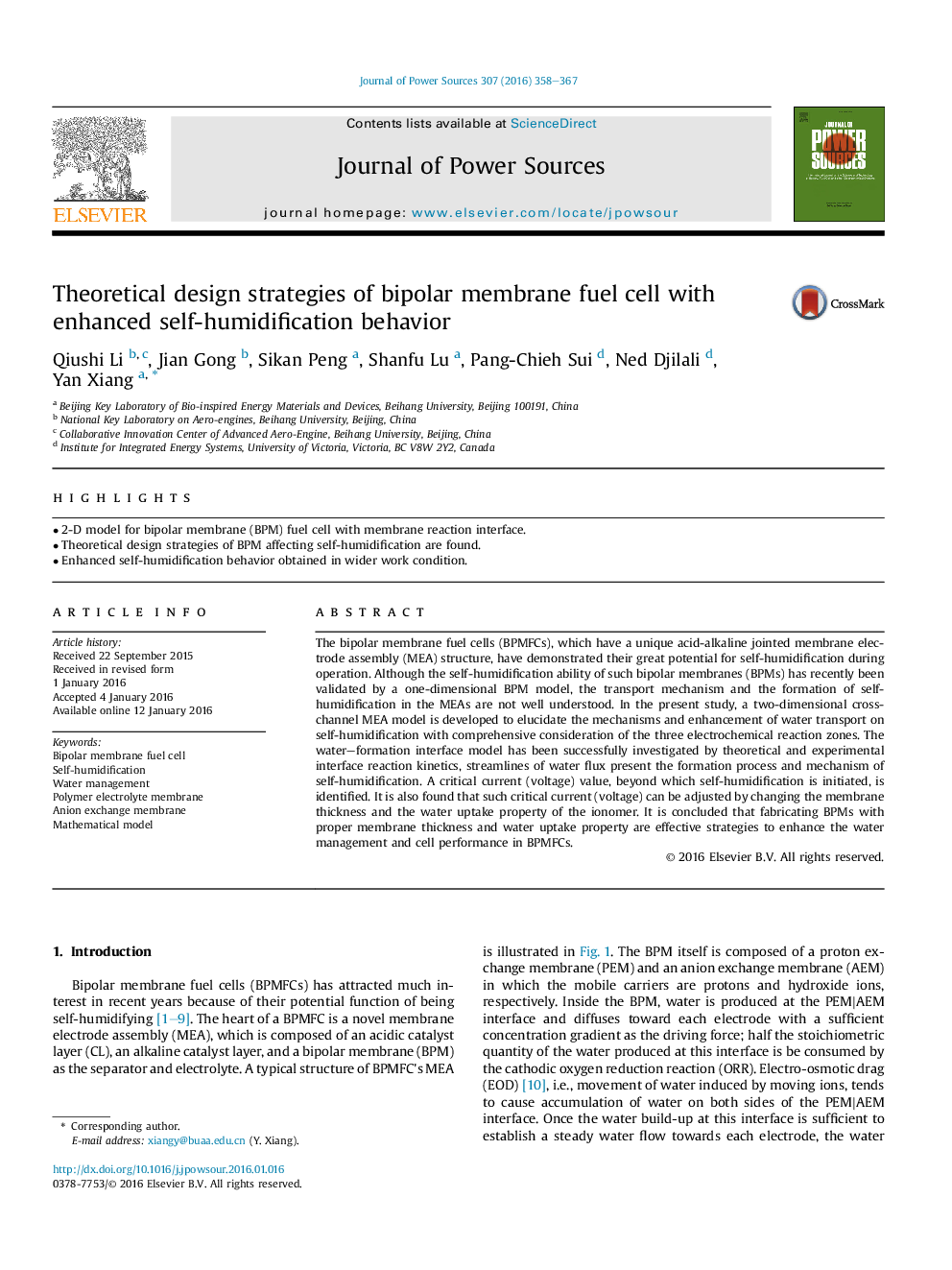| Article ID | Journal | Published Year | Pages | File Type |
|---|---|---|---|---|
| 7728943 | Journal of Power Sources | 2016 | 10 Pages |
Abstract
The bipolar membrane fuel cells (BPMFCs), which have a unique acid-alkaline jointed membrane electrode assembly (MEA) structure, have demonstrated their great potential for self-humidification during operation. Although the self-humidification ability of such bipolar membranes (BPMs) has recently been validated by a one-dimensional BPM model, the transport mechanism and the formation of self-humidification in the MEAs are not well understood. In the present study, a two-dimensional cross-channel MEA model is developed to elucidate the mechanisms and enhancement of water transport on self-humidification with comprehensive consideration of the three electrochemical reaction zones. The water-formation interface model has been successfully investigated by theoretical and experimental interface reaction kinetics, streamlines of water flux present the formation process and mechanism of self-humidification. A critical current (voltage) value, beyond which self-humidification is initiated, is identified. It is also found that such critical current (voltage) can be adjusted by changing the membrane thickness and the water uptake property of the ionomer. It is concluded that fabricating BPMs with proper membrane thickness and water uptake property are effective strategies to enhance the water management and cell performance in BPMFCs.
Keywords
Related Topics
Physical Sciences and Engineering
Chemistry
Electrochemistry
Authors
Qiushi Li, Jian Gong, Sikan Peng, Shanfu Lu, Pang-Chieh Sui, Ned Djilali, Yan Xiang,
